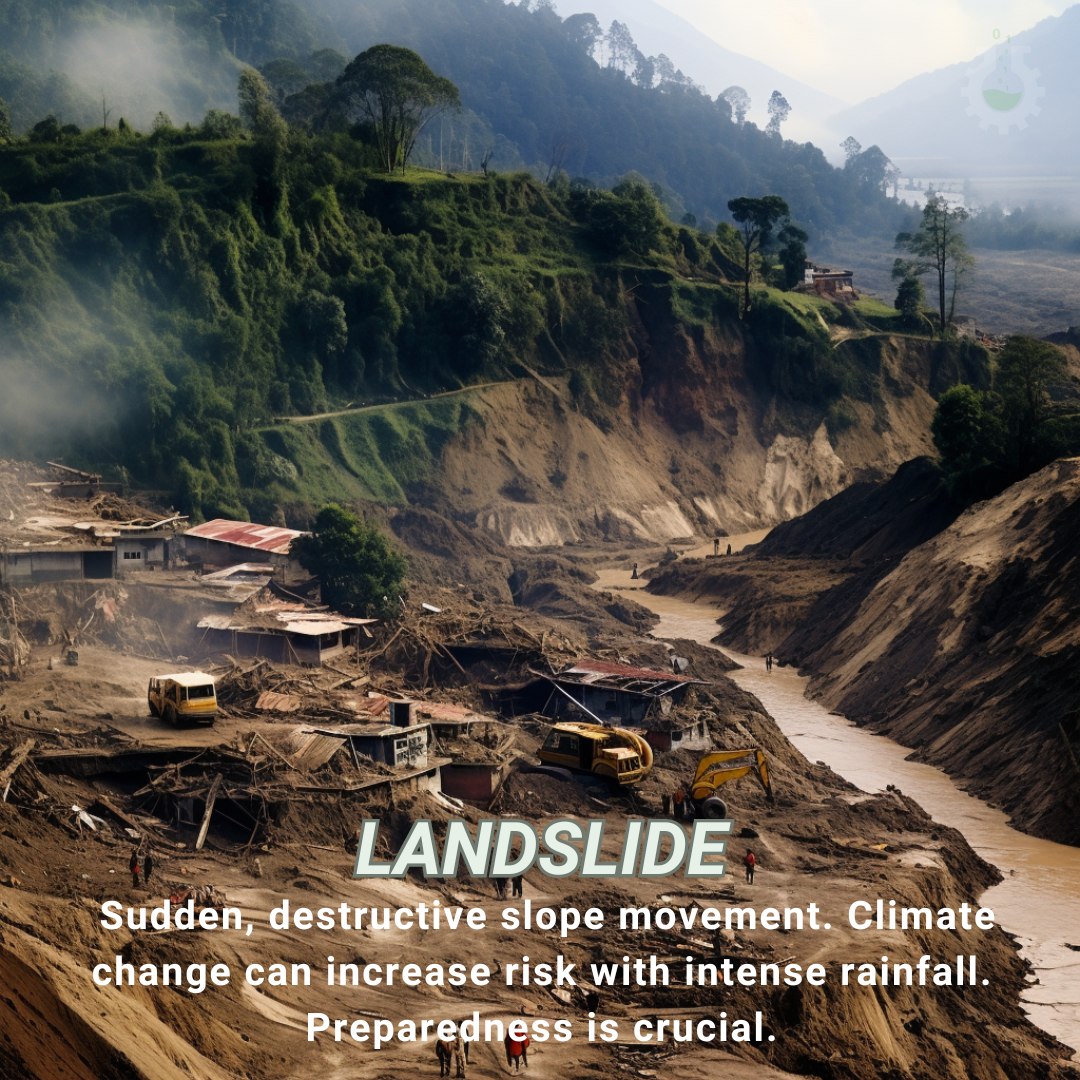November 7, 2023
Climate Change Poster Collection of the Day – Landslide
Book a Demo
Today’s Climate Change Poster Collection focuses on Landslide, the type of mass wasting process that involves the movement of rock, debris, or earth down a slope due to the force of gravity. Climate change is one of the most pressing challenges of our time, and its effects are far-reaching, impacting various aspects of our environment and society. One area where climate change has significant consequences is in the field of landslides. Landslides are a type of mass wasting process that involves the movement of rock, debris, or earth down a slope due to the force of gravity. In recent years, the gradual increase in global temperatures and the rise in extreme weather events have made it evident that climate change is not merely a theoretical concept; it is a reality that must be addressed urgently.
This blog post focuses on a chapter titled “The Impact of Climate Change on Landslide Hazard and Risk” authored by Luciano Picarelli, Suzanne Lacasse, and Ken K. S. Ho. This chapter is part of the book “Understanding and Reducing Landslide Disaster Risk.” The chapter was first published online on December 22, 2020, and has received substantial attention with 1293 accesses and 3 citations.
The chapter begins by emphasizing the undeniable fact that our planet is experiencing a warming climate. This warming has a direct and profound impact on the stability of both natural and engineered slopes, ultimately affecting the occurrence and frequency of landslides. However, the specific nature and extent of these changes in slope stability, as well as the variations in landslide occurrence due to climate change, are not always clear-cut. Climate and landslides operate on partially overlapping temporal and spatial scales, making it challenging to assess the full scope of climate change’s influence on landslides.
The authors review existing literature on the relationship between climate change and landslides, revealing a geographical bias in the distribution of studies, with many regions of the world left unexamined. They stress the importance of conducting new studies in previously unexplored areas, particularly in Asia, South America, and Africa. The review also highlights the role of factors like temperature, precipitation, wind, and weather systems in directly and indirectly affecting slope stability.
The paper offers a comprehensive assessment of the impact of climate change on landslide activity and abundance, providing a global map of projected changes. In regions where global warming is expected to increase the frequency and intensity of heavy rainfall events, a primary trigger for rapid-moving landslides, it is predicted that more people will be exposed to landslide risk.
The chapter concludes by offering recommendations for landslide adaptation and risk reduction strategies within the context of a warming climate. It underlines the importance of quantifying and communicating uncertainties in landslide projections to inform decision-makers and the public effectively.
The study highlights the urgency of addressing the complex relationship between climate change and landslides. It emphasizes the need for further research and the development of strategies to mitigate the increased risk of landslides associated with a changing climate.
The impact of climate change on landslides is a critical issue that demands our attention. Understanding the complex interactions between climate variables and landslide risk is essential for the development of effective adaptation and mitigation strategies. This chapter provides valuable insights into the challenges and potential solutions in managing landslide risk in a world facing the reality of climate change.
Discover an inspiring collection of climate change poster.



